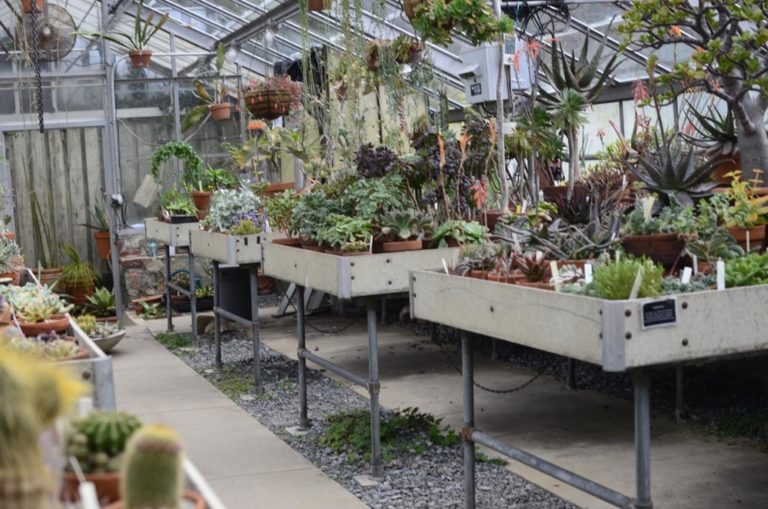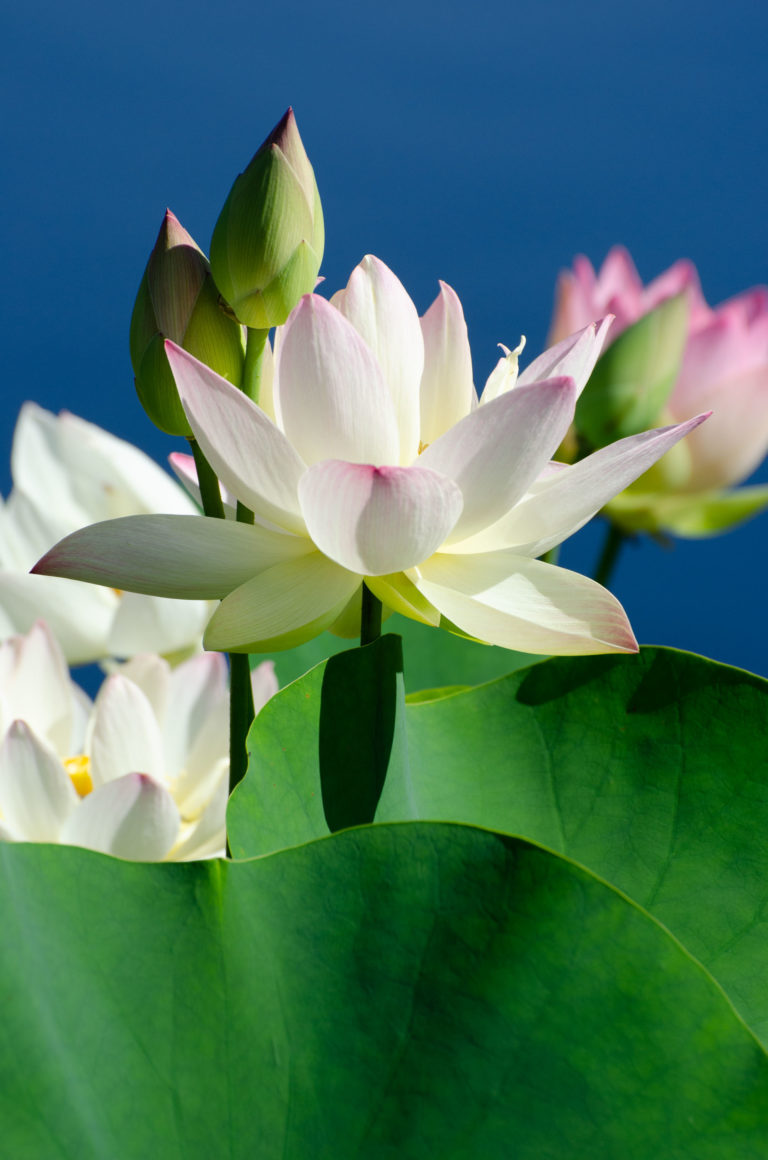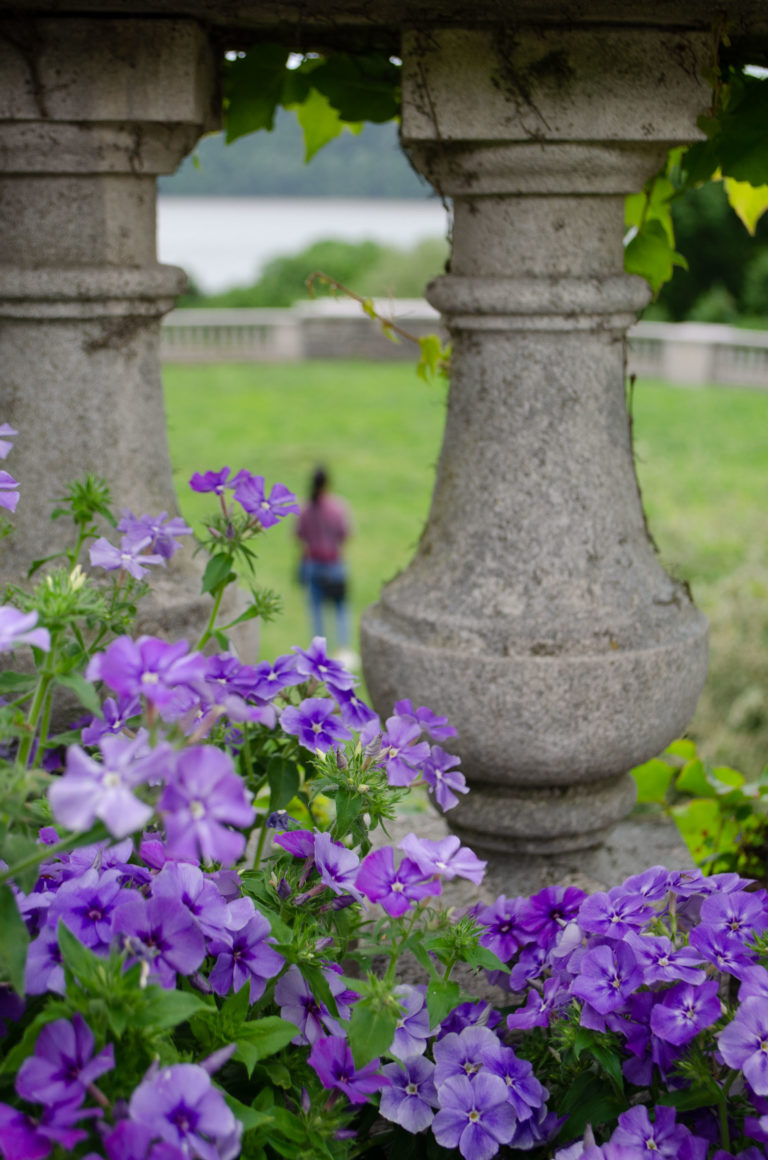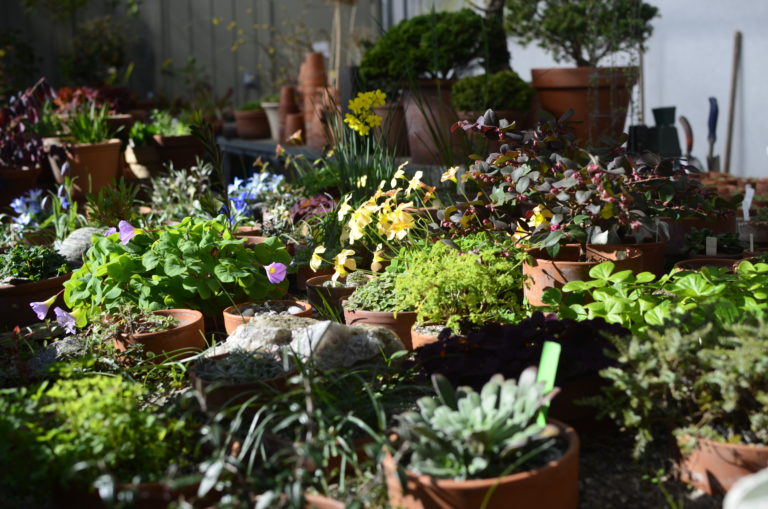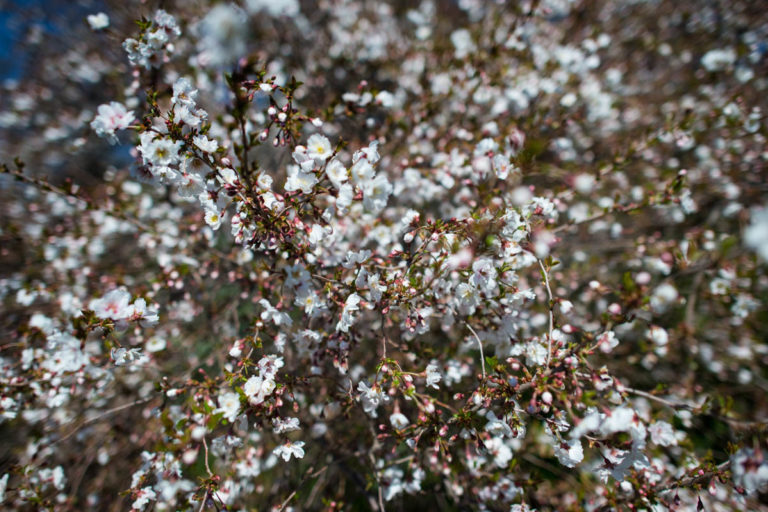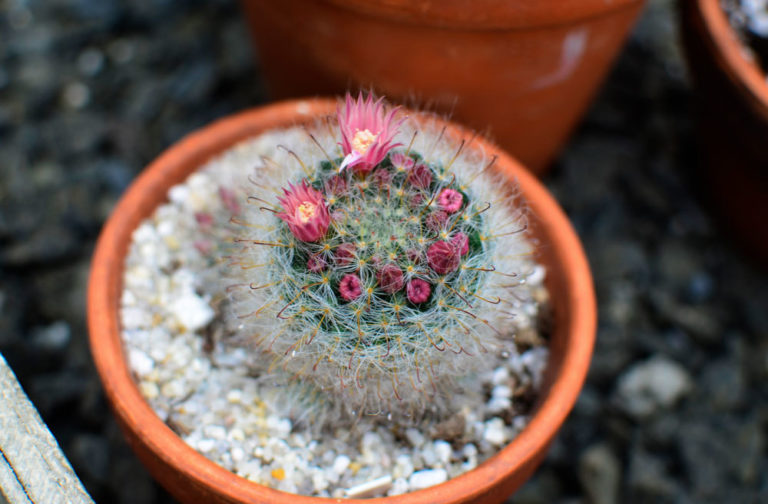
The Cactus and Succulent House in Late March
March 19, 2020The Cactus and Succulent House at Wave Hill is filled with plants from the drier regions of the world. Hundreds of these very varied plants are displayed in traditional terracotta pots, placed on growing benches and grouped by genus.
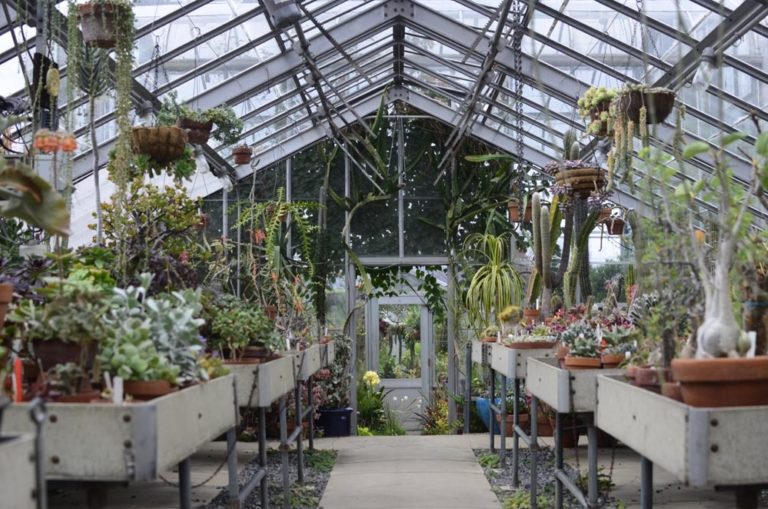
Early spring is a good time to catch many of them in bloom and, even if not in flower, most still have their winter foliage coloration—a deep pink, or purple, tinge—and have not yet returned to their more normal green, or grayish-green, of summer.
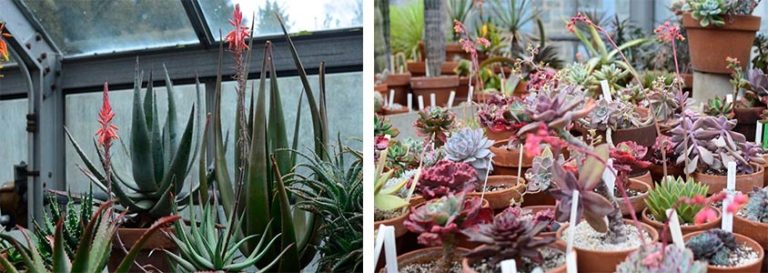
Succulents are plants that are adapted to periods of drought. Although very diverse, what they all have in common is that some part of their anatomy is thick and fleshy and capable of storing moisture. They are divided into three main categories: leaf succulents, which have thick, fleshy leaves; stem succulents, such as the magnificent saguaro cactus; and caudex plants, which have a thickening at the base of the stem that continues below the soil surface.
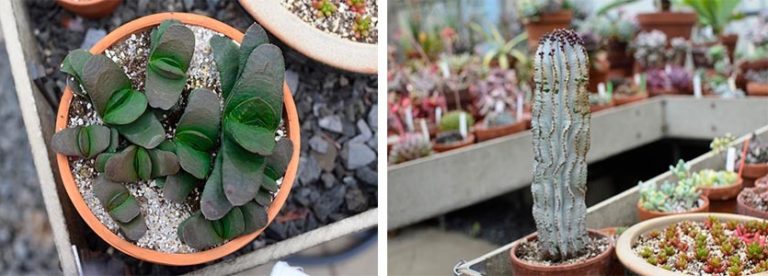
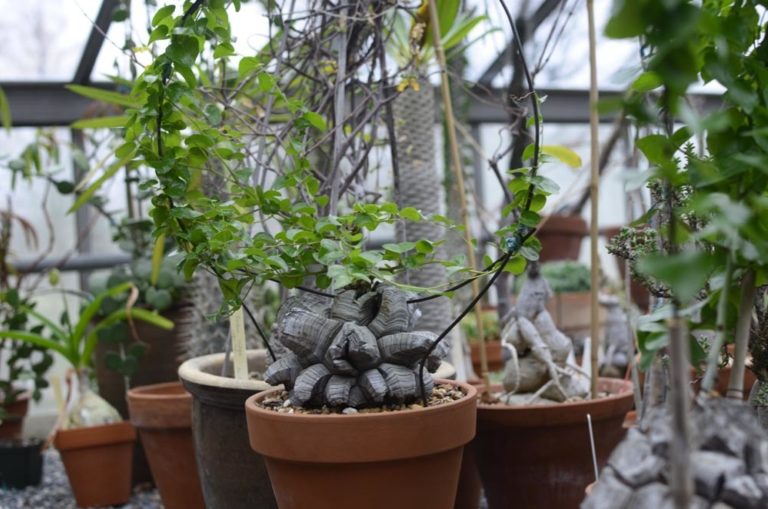
Deserts are dry for much of the year, but the duration and timing of the drought period varies from region to region. Temperatures vary too, with some deserts experiencing hot daytime temperatures most of the year, while others might have long, cold winters. Our plants have come from many different parts of the world and a knowledge of their climatic needs is essential to keeping them alive. If a plant goes dormant during the hot, dry summers of its natural habitat, watering at the wrong time could kill it. Equally, some plants might be dormant in winter or, perhaps, require occasional water at intervals throughout the year. Gardener Harnek Singh has looked after the Wave Hill succulents for more than 10 years and he knows the needs of each one.
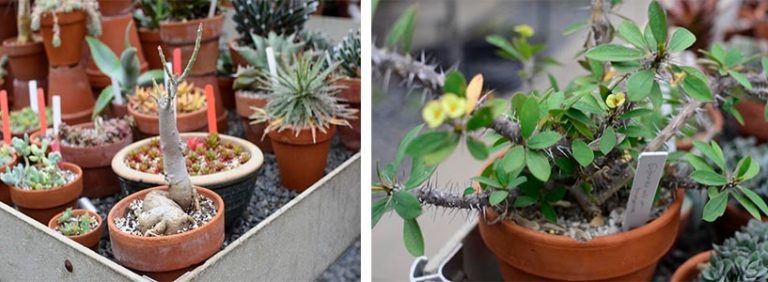
Success, however, can result in a problem. As the plants grow, they occupy more space and, as wonderful as large specimens can be, we simply can’t maintain such a diverse collection if the plants are too big. Consequently, Harnek regenerates the older plants, either by severe cutting-back or, more usually, by propagation—a relatively easy process because most succulents root very readily from cuttings.
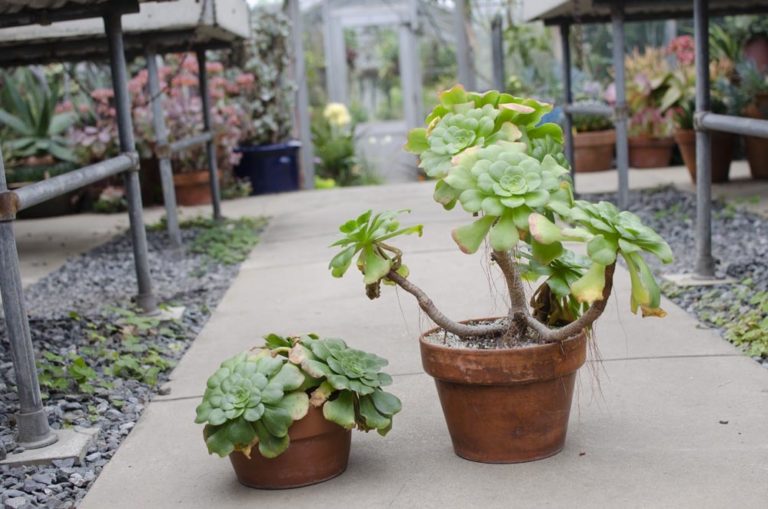
This ease of propagation allows opportunities for displaying plants in novel ways. A mass of rooted cuttings of jelly-bean sedum (Sedum guatemalense) were planted in a wide, shallow container a few months ago and now looks superb.
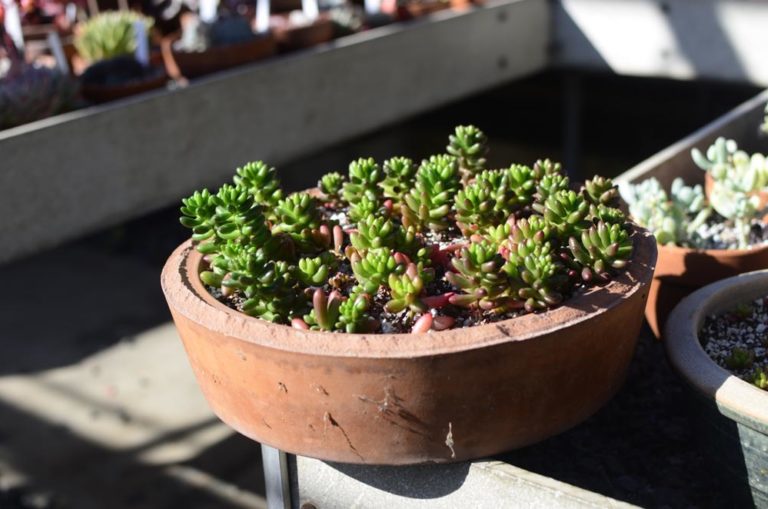
There remains the question, what is the difference between a cactus and a succulent? Pretty much, they are all succulents, but a cactus, according to a botanist, is a member of one particular plant family, Cactaceae. In the 18th century, Carl Linnaeus latinized the ancient Greek word for a prickly plant (kaktos)—probably the cardoon—and applied it to a group of spiny plants native to the Americas. Ancient Greeks would never have seen a “true” cactus.
This fine member of the Mammillaria genus, shown at the top of this post as well, demonstrates just how attractive cactus blooms can be.

By Charles Day, Wave Hill's Ruth Rea Howell Senior Horticultural Interpreter
